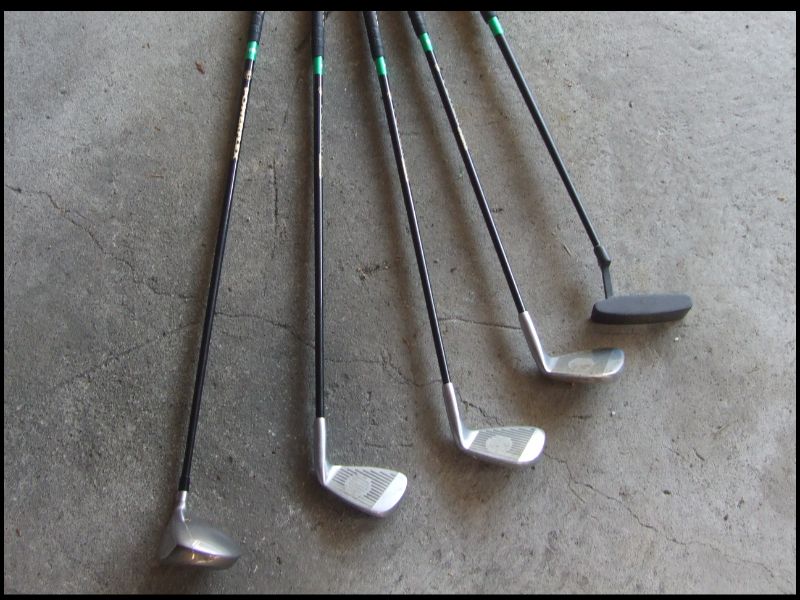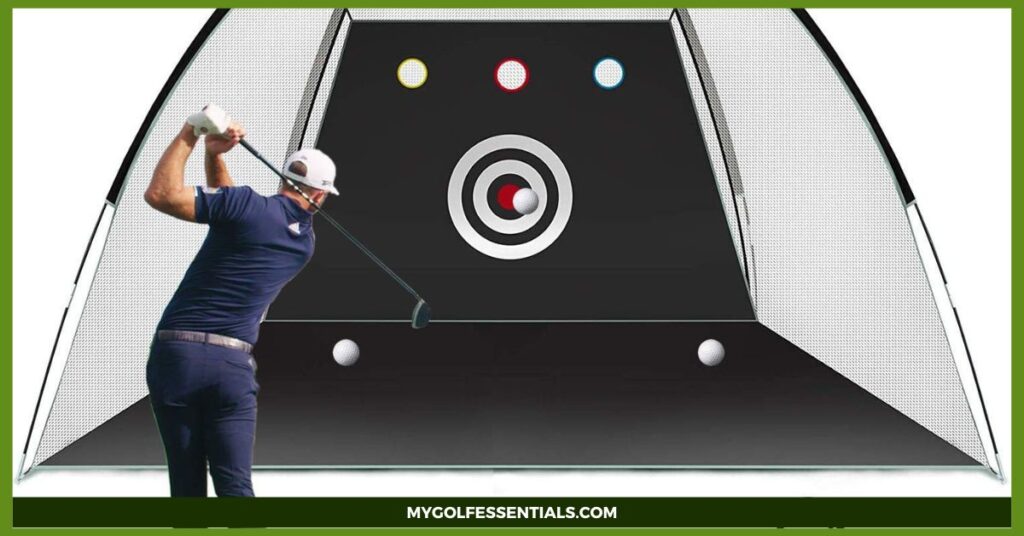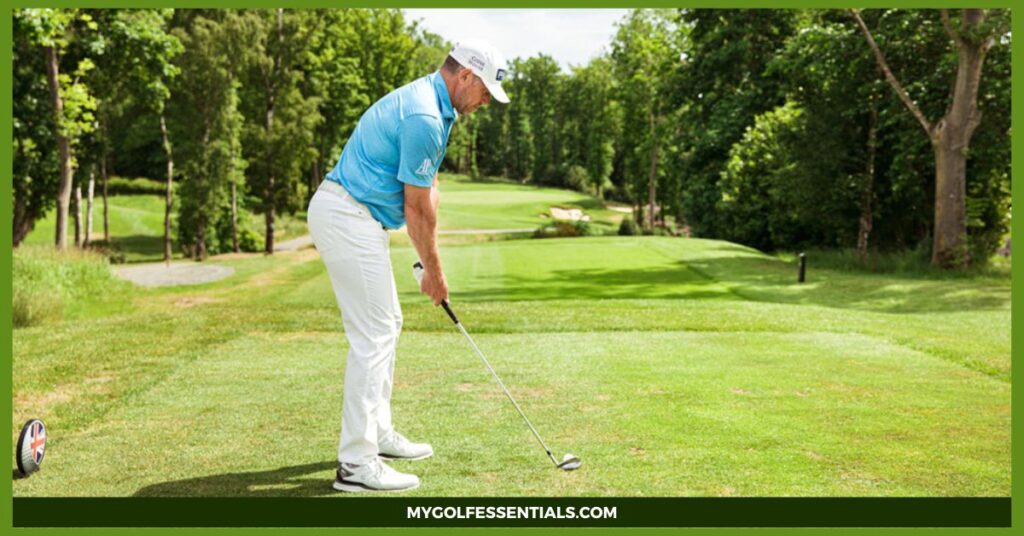
If you’re looking to elevate your short game and improve your approach shots, then it is essential to understand the lofts of your pitching, gap, and sand wedges. Look no further. We’ve got you covered with this article in order to give you a broad idea about these concepts.
In this guide, we break down the different wedge lofts, how they affect your performance, and what to consider when choosing the right club. Whether you’re a beginner or an experienced golfer, mastering your wedge selection can make a significant difference in your overall score.
So, without further ado, let’s get read on and discover how you can take your game to the next level with the right wedge lofts in 2025!
What Are Wedges?
Wedges are a type of golf club designed for short-distance, high-accuracy shots. They are often used when you’re near the green or in challenging situations like bunkers. These clubs have the highest loft of any in your bag, helping to create a higher trajectory for your shots.
Furthermore, wedges are essential for improving your control and precision, especially when you’re looking to dial in your approach shots or escape tricky lies.
Types of Wedges

There are several types of wedges, each serving a specific purpose based on its loft and intended use. Below is an overview of the most common types of wedges and their characteristics.
1. Pitching Wedge
The pitching wedge is often the go-to club for approach shots and is typically used when you’re within a short to mid-range distance from the green. It’s a versatile club that offers a good mix of distance and control, making it ideal for shots that require accuracy but don’t involve obstacles like sand or rough.
- Typical Loft Range: Pitching wedges generally have a loft range between 42 to 48 degrees, making them the least lofted among wedges.
- Average Distance: On average, a pitching wedge covers 90 to 120 yards, depending on the player’s skill level and swing strength.
2. Gap Wedge
The gap wedge is designed to bridge the distance between the pitching wedge and the sand wedge, helping golfers manage those in-between distances where a full swing with a pitching wedge might be too much, but a sand wedge would fall short. It’s perfect for covering those tricky gaps in your short game.
- Typical Loft Range: Gap wedges typically have a loft range of 48 to 52 degrees, providing just enough loft to give more lift than a pitching wedge but less than a sand wedge.
- Average Distance: A gap wedge usually covers an average distance of 80 to 110 yards, making it a great option for shorter approach shots.
3. Sand Wedge
The sand wedge is specifically designed for escaping bunkers or making high, soft shots around the green. It features a wide, rounded sole to help the club glide through sand or thick grass, making it easier to lift the ball out of tough lies.
- Typical Loft Range: Sand wedges typically have a loft range between 54 to 56 degrees, giving them a higher trajectory to clear obstacles like sand traps.
- Average Distance: On average, a sand wedge covers around 65 to 80 yards, making it the go-to club for short, high shots that require a soft landing.
Pitching Wedge vs Gap vs Sand Wedge Distance Difference
It’s crucial to understand the distance each club can cover before selecting the right wedge for your shot. While loft dictates the height and spin of your shot, distance plays an equally important role in determining which wedge to use in various scenarios.
Here’s a breakdown of how the pitching wedge, gap wedge, and sand wedge compare in terms of distance and when each one is most effective.
1. Pitching Wedge vs. Gap Wedge
A pitching wedge typically covers a distance of 90 to 120 yards, making it the longest-reaching wedge in most golfers’ bags. It is primarily used for full swings when you’re approaching the green from mid-range distances.
On the other hand, the gap wedge is designed to cover the distance that falls between the pitching wedge and sand wedge, with an average range of 80 to 110 yards. This makes it perfect for shots that are too short for a pitching wedge but still require more reach than a sand wedge can provide.
When to Use Each
- Pitching Wedge: Best used for approach shots from the fairway when you need to hit a longer, more controlled shot to the green. It is also ideal for lower-lofted shots that require roll on the green.
- Gap Wedge: This wedge is great for closing the distance when you’re too close for a full pitching wedge shot but still too far for a sand wedge. Its higher loft allows for more precision and control on shorter approach shots, helping to stop the ball faster on the green.
2. Gap Wedge vs. Sand Wedge
While the gap wedge covers a distance of 80 to 110 yards, the sand wedge has a shorter range, typically between 65 to 80 yards. The sand wedge is primarily used for escaping sand traps or hitting delicate, high-trajectory shots around the green, whereas the gap wedge is more versatile, offering mid-range coverage with additional loft.
When to Use Each
- Gap Wedge: Ideal for approach shots that require precision but still cover more distance than a sand wedge can handle. It’s a go-to club for filling distance gaps and controlling your shot’s height and spin.
- Sand Wedge: Primarily used in bunkers or when you need to pop the ball up quickly, such as in deep rough or near the green. Its high loft is perfect for delicate shots that require a steep ascent and a soft landing, especially when stopping the ball quickly is essential.
Choosing the right wedge based on distance and shot requirements can be the difference between sticking the ball close to the pin or overshooting the green. Understanding the unique distance capabilities of each wedge ensures you have the tools to manage any shot around the course.
Factors Affecting Distance
Several factors influence the distance a wedge can cover, with loft and swing technique being the most critical. Understanding how these elements work together can help you achieve more consistent and controlled shots around the green.
Here’s an overview of how loft and swing technique affect the distance of your pitching, gap, and sand wedges.
1. Loft and Its Impact on Distance
Loft refers to the angle of the clubface relative to the ground, and it plays a significant role in determining both the height and distance of your shot. The higher the loft, the more backspin is generated, resulting in a higher trajectory but less overall distance.
Conversely, a lower loft produces a lower, more penetrating ball flight with greater distance.
Comparison of Lofts Among the Three Wedges
- Pitching Wedge: Typically has the least loft, ranging between 42 to 48 degrees, making it the longest-hitting wedge. The lower loft results in less backspin and a longer ball flight.
- Gap Wedge: Sits between the pitching and sand wedges with a loft of 48 to 52 degrees, offering a balance of distance and height.
- Sand Wedge: With the highest loft at 54 to 56 degrees, the sand wedge generates the most height and spin, ideal for shorter, high-arcing shots that stop quickly on the green but cover less distance.
2. Swing Technique
While loft is key, your swing technique significantly impacts how far the ball travels. A well-executed swing allows you to fully utilize the club’s design, optimizing both distance and control. Proper swing mechanics(such as maintaining a consistent tempo, correct ball positioning, and smooth follow-through) are crucial for maximizing distance with each wedge.
Tips for Improving Distance with Each Wedge Type
- Pitching Wedge: Focus on a fuller, controlled swing to maximize distance. Keep the ball slightly forward in your stance to promote a clean strike and lower trajectory.
- Gap Wedge: Use a three-quarter swing for better accuracy and control. The key is to maintain a steady rhythm to ensure that you’re not sacrificing accuracy for distance.
- Sand Wedge: When using the sand wedge, a more open stance and softer swing help you lift the ball higher, especially in bunkers or when you need to stop the ball quickly on the green. To maximize distance, focus on a smooth acceleration through impact without over-swinging.
By mastering both the loft and swing mechanics of each wedge, you’ll be able to better control your distances and improve your overall short game.
Practical Applications of Pitching, Gap & Sand Wedges
Mastering your wedges is key to improving your short game, and understanding when and how to use each wedge can greatly enhance your performance on the course. Below is an overview of practical tips and common mistakes to help you get the most out of your pitching, gap, and sand wedges.
Tips To Choose the Right Wedge for Different Situations
Selecting the correct wedge for a given shot is essential for controlling distance, trajectory, and spin. The right wedge can make a big difference in challenging situations like approach shots, bunkers, and around the green. For that, knowing how each wedge performs in various conditions will help you make more informed choices.
Scenarios for Using Each Wedge Type Based on Course Conditions
- Pitching Wedge: Best for longer approach shots from 90–120 yards, especially on open fairways. It’s ideal for situations where you don’t need a lot of loft but want controlled distance.
- Gap Wedge: Use this when you’re around 80–110 yards from the pin and need to cover more distance than a sand wedge can handle. It’s perfect for controlled, high-spin shots that stop quickly on the green.
- Sand Wedge: The go-to club for bunker shots or short, high-trajectory shots (65–80 yards). Also useful around the green when you need to pop the ball up and have it land softly.
Recommendations for Practice to Master Each Wedge
- Pitching Wedge: Practice full swings from various distances and lies to develop a feel for its range and roll.
- Gap Wedge: Focus on partial swings and controlling loft, especially for mid-range shots where precision is critical.
- Sand Wedge: Spend time in the bunker practicing different lies and using varied levels of swing strength to understand how the sand affects ball flight.
Common Mistakes to Avoid
Here is an overview of frequent errors golfers make with wedges.
- Some May Choose the Wrong Wedges: Many golfers mistakenly use the wrong wedge for the situation, like using a pitching wedge when a gap wedge would offer better control, or a sand wedge when a gap wedge would provide more distance.
- You May Be Overswinging: Trying to generate more distance by swinging harder can cause loss of accuracy and control. Wedges require finesse and control, not power.
- Improper Ball Position: Placing the ball too far forward or too far back in your stance can lead to inconsistent strikes, affecting both loft and distance.
How Can I Improve My Wedge Play?
- Focus on Control Over Power: Wedge shots require precision and touch. Practice different levels of swing strength, concentrating on distance control and spin rather than power.
- Learn to Vary Loft and Spin: Spend time practicing how to open and close the clubface to change loft and spin. This will help you handle a variety of lies and course conditions.
- Play to Your Strengths: Understand the distances you’re comfortable with for each wedge and focus on mastering those ranges. It’s better to be consistent at a certain distance than to force shots outside your comfort zone.
By applying these tips and avoiding common mistakes, you’ll be able to make smarter decisions with your wedges, improve your short game, and lower your scores.
What Are the Best Wedges to Have in Your Bag?
The best wedges to carry depend on your playing style, strengths, and the types of courses you typically play. Most golfers benefit from having at least three wedges: a pitching wedge (PW), a gap wedge (GW), and a sand wedge (SW). For players who want more versatility around the green, adding a lob wedge (LW) can provide extra loft for delicate, high-trajectory shots.
- Pitching Wedge (42°-48°): Essential for longer approach shots, typically ranging from 90-120 yards.
- Gap Wedge (48°-52°): Fills the distance gap between a pitching and sand wedge, offering more control for shots around 80-110 yards.
- Sand Wedge (54°-56°): Used primarily for bunker play and short, high shots around the green, with a distance of 65-80 yards.
- Lob Wedge (58°-64°): Ideal for high-lofted shots near the green or when you need to stop the ball quickly with minimal roll.
Which Wedge Setup Is Right for Me?
Choosing the right wedge setup comes down to your personal style and course conditions. A basic three-wedge setup of pitching, gap, and sand wedge is recommended for most golfers, but if you play courses with fast greens or deep bunkers, adding a lob wedge can give you more control. Here are some popular wedge setups:
- Three-Wedge Setup: Pitching Wedge (46°), Gap Wedge (50°), Sand Wedge (54°)
- Four-Wedge Setup: Pitching Wedge (46°), Gap Wedge (50°), Sand Wedge (54°), Lob Wedge (58°)
If you prefer versatility for different distances and lies, a four-wedge setup is ideal, giving you multiple options for approach shots and around the green.
What Is Bounce on a Wedge?
The bounce of a wedge refers to the angle between the leading edge of the clubface and the lowest point of the sole. Bounce helps prevent the club from digging into the ground or sand, making it easier to strike the ball cleanly. Higher bounce wedges are best for softer conditions like fluffy sand or thick rough, while lower bounce wedges are better for firm turf and tight lies.
What Bounce Should I Have on My Wedges?
Your wedge bounce depends on your playing style and the conditions you face most often:
- Low Bounce (4°-6°): Ideal for tight lies, firm turf, or golfers with a shallow swing (who tend to “sweep” the ball off the ground). Low bounce offers less resistance but can be harder to control in soft conditions.
- Mid Bounce (7°-10°): A versatile option for most course conditions. This is suitable for players with a more neutral attack angle, offering a good balance between control and forgiveness.
- High Bounce (10°-14°): Best for soft, fluffy sand or thick rough. Players with a steeper swing (who tend to take deeper divots) benefit from high bounce as it helps prevent the club from digging into the ground.
If you play on varied courses, a combination of low, mid, and high bounce wedges can give you more flexibility.
What Shafts Should I Have in My Wedges?
Wedge shafts come in different flexes and materials, and the best choice depends on your swing speed and playing style. Most golfers opt for steel shafts due to their control and stability, while some may prefer graphite shafts for a lighter feel.
- Steel Shafts: Offer better feedback and control, typically recommended for wedges where precision is key.
- Graphite Shafts: Provide more flexibility and a lighter weight, often preferred by players with slower swing speeds.
It’s common for players to have slightly heavier shafts in their wedges compared to their irons, as this can promote better feel and control around the green.
Can I Customize My Wedges?
Yes, wedges can be customized to fit your game and preferences. Here are some ways to personalize your wedges:
- Loft and Bounce: You can select specific lofts and bounce angles to match your swing and course conditions.
- Grind Options: Some wedges offer different sole grinds, which affect how the club interacts with the turf. Custom grinds allow you to tweak the sole’s shape to suit your swing type and playing conditions.
- Shafts and Grips: You can choose different shaft materials, flexes, and even specific grip sizes for more comfort and control.
- Finishes and Aesthetic Customization: Many brands allow for custom finishes, colors, and even personalized stamping to give your wedges a unique look.
Customizing your wedges ensures that you have the perfect tools for your short game, enhancing your performance across various course conditions.
Final Thoughts
Understanding the nuances of pitching, gap, and sand wedge lofts is crucial for any golfer looking to refine their short game and improve overall performance on the course. Each wedge serves a specific purpose, with distinct lofts and distance ranges that influence shot selection and execution. By mastering the appropriate use of these clubs, players can effectively navigate various course conditions, enhancing precision and control.
Furthermore, investing time in practice to understand the mechanics of each wedge, along with common mistakes to avoid, will lead to more consistent and effective play. Whether you opt for a three-wedge setup or expand your arsenal with a lob wedge, tailoring your selection to your playing style and the courses you frequent can yield significant improvements.
Ultimately, the right wedges, paired with sound technique, can be game-changers in achieving lower scores and greater enjoyment of the game.
Key Points
- Wedges are specialized golf clubs designed for short-distance, high-accuracy shots, with three primary types: pitching wedges, gap wedges, and sand wedges.
- Each wedge has a specific loft range—pitching wedges (42-48 degrees), gap wedges (48-52 degrees), and sand wedges (54-56 degrees)—affecting shot trajectory and distance.
- Pitching wedges cover 90-120 yards, gap wedges 80-110 yards, and sand wedges 65-80 yards, allowing golfers to choose the right club for various shot distances.
- A golfer’s swing technique plays a critical role in maximizing distance and control with each wedge, emphasizing proper mechanics over sheer power.
- Selecting the appropriate wedge for specific scenarios—pitching wedge for longer approach shots, gap wedge for mid-range control, and sand wedge for bunker and delicate shots—is essential for effective play.
- Golfers often misuse wedges by selecting the wrong type for the shot, overswinging, or having improper ball positioning, which can lead to inconsistent results.
- Regular practice with each wedge type, focusing on swing strength and control, is vital for improving performance and confidence around the green.
- Most golfers benefit from a three-wedge setup (pitching, gap, and sand wedge), while adding a lob wedge can enhance versatility for specific playing conditions and shot requirements.
FAQs
What is the difference between a pitching wedge and a gap wedge?
A pitching wedge typically has a loft angle between 44 and 48 degrees, making it suitable for controlled full swings and approach shots. In contrast, a gap wedge has a loft angle between 50 and 54 degrees and is used to fill the distance gap between the pitching and sand wedges. It offers more loft and control, ideal for shorter approach shots and delicate chips around the green.
When should I use a gap wedge?
You should use a gap wedge when the distance between your pitching wedge and sand wedge is too large to cover effectively. It’s perfect for approach shots under 100 yards where more loft and control are needed, such as over hazards or when aiming for a soft landing on the green.
How much distance can I expect from a pitching wedge vs. a gap wedge?
A pitching wedge generally covers a distance of 100 to 120 yards, while a gap wedge is typically used for shots ranging from 80 to 110 yards, depending on your swing speed and conditions.
What is the difference between a gap wedge and a sand wedge?
A gap wedge has a loft of 50 to 54 degrees and is used for shots requiring more control but less loft than a sand wedge. A sand wedge, with a loft of 54 to 58 degrees, is designed for bunker shots and other situations requiring a steep ascent and quick stop, such as high-lofted shots from the rough.
How does loft affect wedge distance?
Loft plays a significant role in determining the distance and trajectory of a shot. Wedges with higher loft, like sand wedges, will generate shorter distances and higher ball flights, while lower-lofted wedges like pitching wedges will hit the ball farther with a flatter trajectory.



